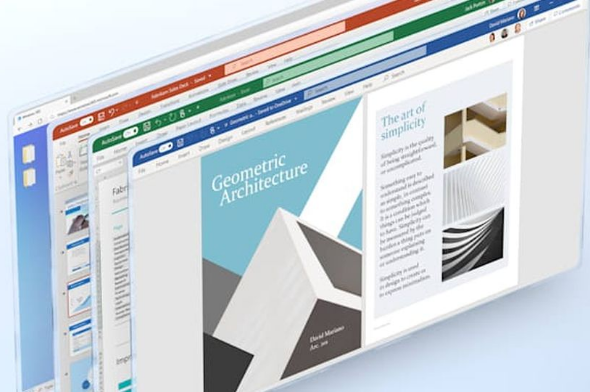Connection to DriversCloud Create a DriversCloud.com account Reset your DriversCloud.com password Account migration
Microsoft unveils Windows 365, its cloud computing solution
The long-awaited Windows 365 has been made official by Microsoft, while its actual availability - for professionals - should be on August 2.
The Windows Inspire conference was held on July 14 and 15. On this occasion, Microsoft lifted the veil on its new service "in the cloud". The Redmond company presented in detail its Windows 365, which should allow you to access and interact with Windows 10 as if it were local ... while it is located in the cloud, probably hundreds of miles from where you are. This is a logical move for Microsoft, which is increasingly emphasizing its cloud services with OneDrive, Azure and, more recently, Office 365.
On the principle, nothing really extraordinary and we all imagine very well what the Windows 365 service will represent: the idea is to offer users to connect to a Windows 10 session - or Windows 11 very soon obviously - through a virtual machine. As long as you have a reliable Internet connection, it will be possible to connect to this virtual machine from almost any device, whether it is a PC or a competing machine, the example of an iPad running MacOS having been cited for example.
Basically, any Web browser will do, but Microsoft would like to develop the Remote Desktop application to offer an alternative to browsers, with an optimized interface. The interest for users is obvious. It allows them to get away from the need for a "powerful" machine locally while enjoying the Windows environment they are used to, from its interface to its applications. Microsoft also points out that the virtual machine - which is based on the Azure Virtual Desktop - will be able to include up to eight virtual processors, 16 GB of RAM and 512 GB of storage space. There is also talk of offering GPU options for more specific needs, but no mention of video games.
For the time being, Microsoft does not intend to target Windows 365 to individuals or the general public. Microsoft's objective is currently strictly professional and the timing seems perfect as telecommuting issues have never been so topical. Microsoft is not mistaken and in its presentations, it highlights tools that everyone has learned to know and master with the health crisis such as Microsoft Teams. Remember that Windows 365 should start its deployment on August 2nd and it will then be easier to check the proper functioning of all this little world.
However, it is important to note that if nothing is really official yet, some examples of Windows 365 pricing have already leaked. For example, a $31 monthly subscription was seen during one of the demos and has been making the rounds on the Web. According to The Verge, this was an offer for two virtual CPUs, 4 GB of RAM and 128 GB of storage space for a company with less than 300 users. Microsoft was quick to point out that this is " pricing for a very specific configuration " implying that things could be largely adjustable.
" There will be many more options, both in terms of configurations and pricing, which we will share when the product is available on August 2," says a company spokesperson. There is talk of making the virtual configuration largely configurable: the number of virtual CPUs (one to eight), the amount of RAM (2 to 32 GB) and storage space (64 to 512 GB) are among the first elements mentioned. The fact remains that Microsoft will have to keep a certain proximity with its competitors. For example, Amazon already has a Windows virtual machine offer with two virtual CPUs, 4 GB of RAM and 50 GB of storage for $35 per month.







